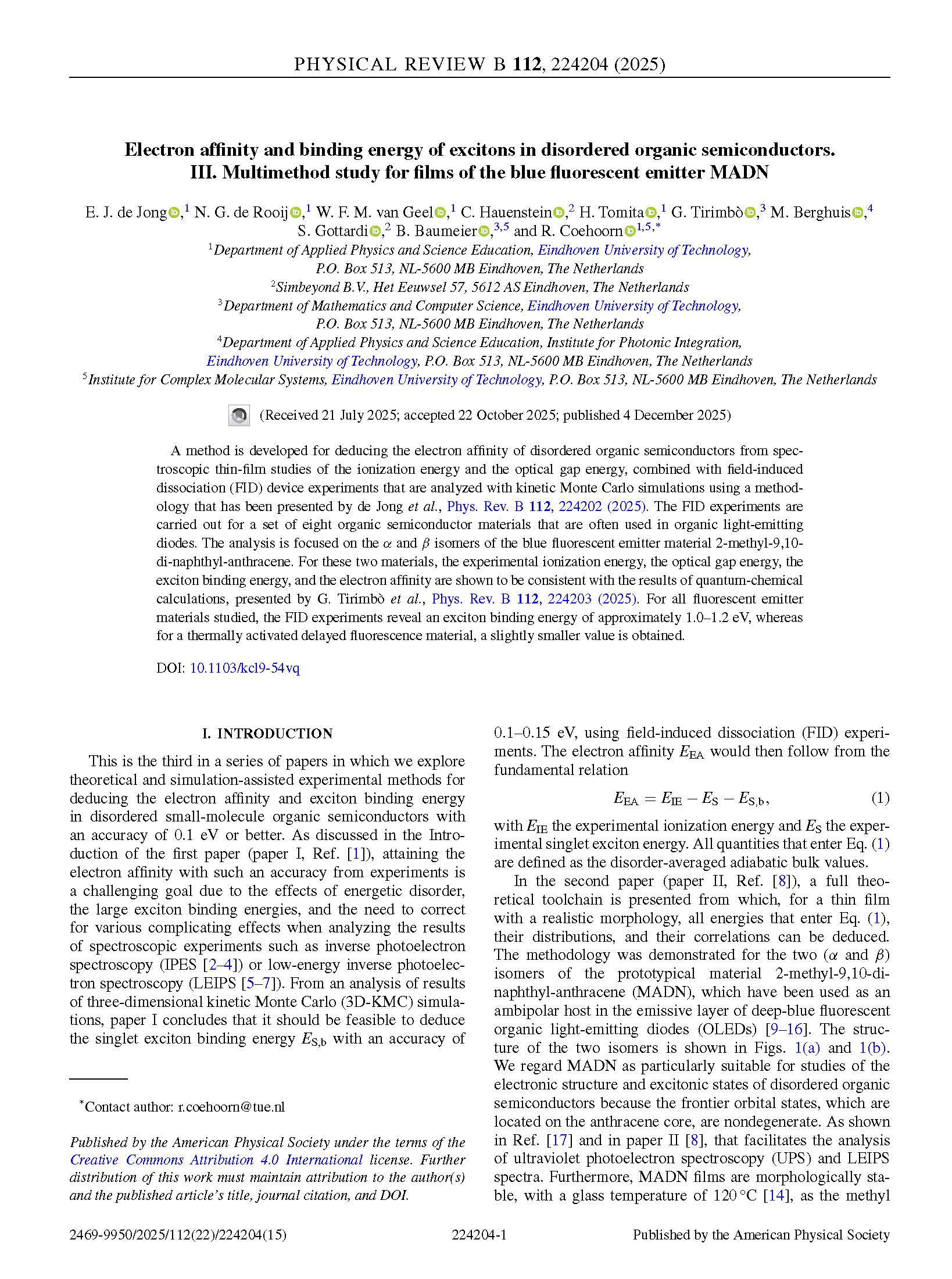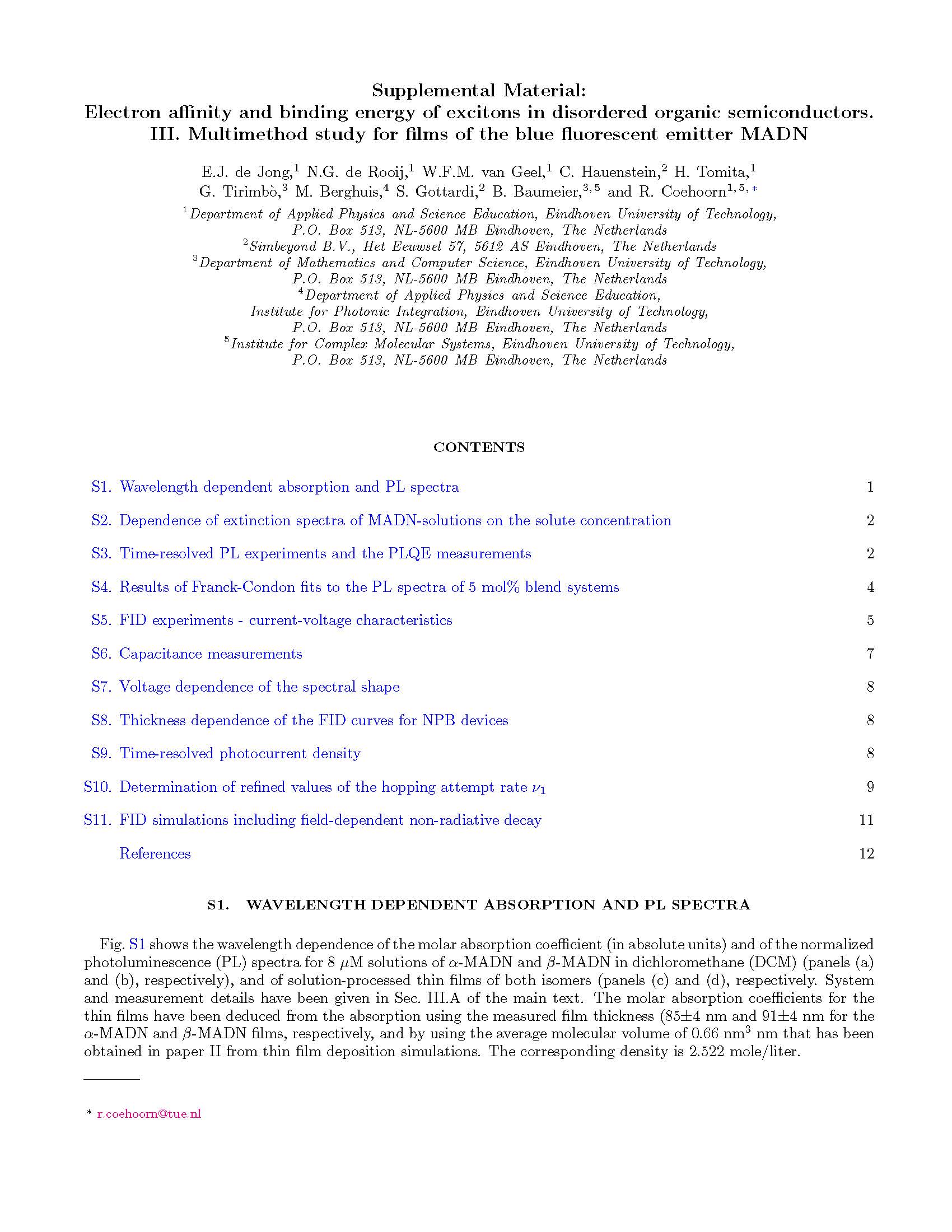
Field-induced dissociation
Abstract
A method is developed for deducing the electron affinity of disordered organic semiconductors from spectroscopic thin-film studies of the ionization energy and the optical gap energy, combined with field-induced dissociation (FID) device experiments that are analyzed with kinetic Monte Carlo simulations using a methodology that has been presented by de Jong et al., Phys. Rev. B 112, 224202 (2025). The FID experiments are carried out for a set of eight organic semiconductor materials that are often used in organic light-emitting diodes. The analysis is focused on the 𝛼 and 𝛽 isomers of the blue fluorescent emitter material 2-methyl-9,10-di-naphthyl-anthracene. For these two materials, the experimental ionization energy, the optical gap energy, the exciton binding energy, and the electron affinity are shown to be consistent with the results of quantum-chemical calculations, presented by G. Tirimbò et al., Phys. Rev. B 112, 224203 (2025). For all fluorescent emitter materials studied, the FID experiments reveal an exciton binding energy of approximately 1.0–1.2 eV, whereas for a thermally activated delayed fluorescence material, a slightly smaller value is obtained.
This work has been accepted in Physical Review B
"Electron affinity and binding energy of excitons in disordered organic semiconductors. III. Multimethod study for films of the blue fluorescent emitter MADN"
(Phys. Rev. B 112, 224204 (2025).)
